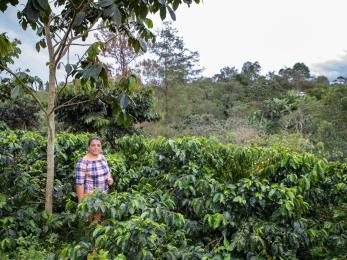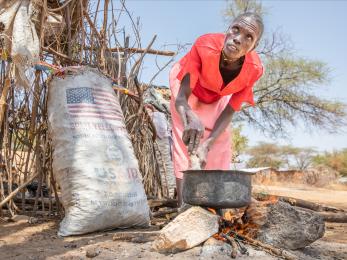The promise of education brings Syrian and Jordanian girls together
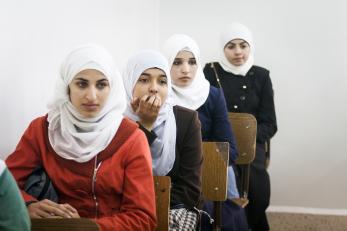
In a small village in north Jordan, Syrian and Jordanian girls sit side by side at school. Each has her very own desk and there is ample space to learn. But until recently, this situation was only a dream.
The Syrian war, which began in March 2011, forced almost four million Syrians to flee their home country. Most have found shelter in Lebanon, Iraq, Turkey or Jordan, where many have family members.
Some live in refugee camps, like nearby Zaatari camp, but most Syrian refugees live in towns or cities alongside their host community neighbors.
Since Syrians began fleeing nearly four years ago, Zaatari Village has doubled in population due to the influx of refugees. It has gone from a small town of 10,000 to one with over 20,000 people.
This drastic change has created a high demand for local services, including education. With a new, larger population, the school in Zaatari Village was unable to accommodate all of the Syrian girls who wanted to attend school.
Those who were able to attend experienced overcrowding and tension between refugees and Jordanians.
“The school was really crowded, we had to sit in crowded classrooms and everyone was very uncomfortable,” said Raghad, 15, who is Jordanian from Zaatari. “There was a lot of fighting.”
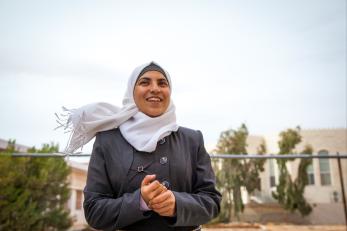
Heba, 18, fled Homs, Syria with her parents, two brothers and her sister, settling in Zaatari Village to wait for an end to the conflict. “When we first arrived in Jordan, it was difficult to study because of the large number of students,” she said. “We could not understand what was going on and it was impossible to participate.”
Mercy Corps has been in Zaatari Village for two years, working with local people in conflict management training. The training helps both Jordanian and Syrian community leaders resolve tensions that arise in the village.
They are taught how to identify the source of a problem, come up with an effective solution, and then develop a proposal. From there, Mercy Corps discusses the community leaders’ ideas with the local government.

The leaders saw the problem at the girls’ school and proposed a solution — building a new girls’ school that could serve 120 more female students. Mercy Corps decided to fund the construction of the school, and the Ministry of Education agreed to provide the teachers.
To make the new school their own, students worked with AptART (Awareness & Prevention Through Art) to design and paint a beautiful mural on the side of the building. Just as the community leaders had hoped, the school is making a world of difference to both Syrian and Jordanian girls living in Zaatari Village.
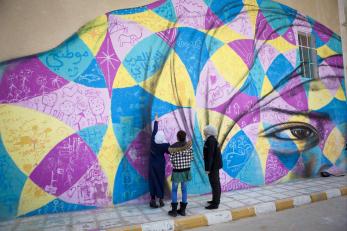
“Syrian students are now involved in all activities, we are treated the same as Jordanian students,” said Heba. “We are participating in everything, not just sitting.” Heba's favorite subjects in school are math, chemistry and physics. She also told us that she loves learning all languages in the new and improved school.
Raghad, who lives in the village with her parents and two brothers, understands why the new school is making such a big difference for the community. “Before, the Syrian refugees did not fit in – it was too overcrowded and there was fighting over seats,” she said.
“Now, there is a much better atmosphere. We have more space and we have good relationships, and we can all learn and participate.”

During his recent six-day tour of the Middle East, The Prince of Wales visited the girls' school and other projects in Zaatari Village that Mercy Corps has helped community leaders build. Throughout his visit, The Prince learned about how the conflict management training is helping communities, and why this work is so important to both Syrian and Jordanian families.
With the improved girls’ school up and running, tensions between young Syrian refugees and their Jordanian classmates have eased, and the community leaders can be proud of what they’ve accomplished by working together.
With Mercy Corps’ conflict management training under their belts, the leaders of Zaatari Village are ready and willing to create more positive changes in their community.

